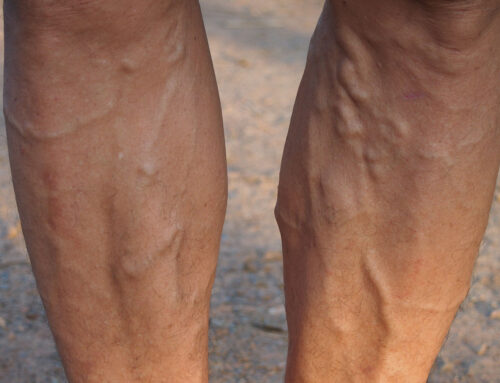Maintaining optimal blood circulation is crucial for overall health, as it ensures that oxygen and nutrients are effectively delivered throughout the body. Poor circulation can lead to a myriad of health issues, including cardiovascular disease, fatigue, and even serious complications. Fortunately, there are numerous exercises to improve circulation that can help boost blood flow and enhance your cardiovascular health. In this article, we will explore the causes of poor circulation, the best exercises to improve blood circulation, and practical ways to enhance your blood flow at home.
What Are the Causes of Poor Blood Circulation?
Understanding Poor Circulation Symptoms
Poor circulation can manifest through various symptoms that are often overlooked. Individuals may experience numbness or tingling in the extremities, cold hands and feet, fatigue, and swelling in the legs. These symptoms of poor circulation can indicate that blood is not flowing effectively through the veins and arteries, leading to discomfort and potential health risks. Recognizing these signs early on is essential for taking proactive measures to improve your blood circulation.
How Lifestyle Choices Impact Blood Flow
Your lifestyle choices play a significant role in blood circulation and overall cardiovascular health. Sedentary behavior, such as prolonged sitting or inactivity, can lead to poor circulation as the muscles remain inactive and the veins struggle to push blood back to the heart. Additionally, an unhealthy diet high in saturated fats and sugars can contribute to artery disease, which impairs blood flow. Incorporating regular exercise, maintaining a balanced diet, and avoiding smoking are vital ways to improve circulation and increase blood flow throughout the body.
Medical Conditions Leading to Poor Circulation
Several medical conditions can contribute to poor circulation, making it imperative to understand their implications. Conditions such as diabetes, high blood pressure, and peripheral artery disease can severely affect blood vessel health and reduce the efficiency of blood flow. These conditions often result in the narrowing of arteries, leading to reduced oxygen and nutrient delivery to various tissues. By managing these health issues through medication and lifestyle changes, individuals can significantly improve their blood circulation and lower the risk of cardiovascular disease.
What Are the Best Exercises to Improve Circulation?

Top 5 Exercises to Improve Blood Circulation
Incorporating specific exercises into your routine can significantly help improve circulation and boost blood flow. Here are the top 5 exercises to improve blood circulation:
- Walking: A simple yet effective exercise, walking promotes overall circulation and helps improve your blood circulation by engaging multiple muscle groups.
- Jumping Jacks: This aerobic exercise increases heart rate, which in turn boosts circulation and increases blood flow throughout the body.
- Leg Raises: A great way to target leg circulation, leg raises enhance blood flow in the lower extremities, combating symptoms of poor circulation.
- Yoga: Practicing yoga promotes flexibility and relaxation, which can help improve blood circulation by reducing stress and encouraging deep breathing.
- Cycling: Whether on a stationary bike or outdoors, cycling is an excellent cardiovascular exercise that enhances blood flow and strengthens the leg muscles.
How to Incorporate Cardiovascular Exercises
Cardiovascular exercises are essential for improving circulation and increasing blood flow. To effectively incorporate these exercises into your routine, aim for at least 150 minutes of moderate aerobic activity each week. This can be broken down into shorter sessions, such as 30 minutes a day, five times a week. Activities like swimming, dancing, or jogging can also be combined for variety. Consistency is key; regular exercise not only helps improve your blood circulation but also strengthens your heart and reduces the risk of cardiovascular disease.
Strength Training for Better Circulation
While cardiovascular exercises are vital, strength training also plays an essential role in enhancing blood circulation. Strength exercises improve muscle mass, which helps the body utilize oxygen and nutrients more efficiently. Incorporating resistance training, such as weight lifting or bodyweight exercises, at least twice a week can help improve your blood circulation and increase blood flow. Focus on compound movements that engage multiple muscle groups to maximize the benefits.
How Can You Improve Your Blood Circulation at Home?
Simple Exercises to Increase Blood Flow
Improving circulation at home can be achieved through simple exercises that require minimal equipment. Activities like marching in place, ankle circles, and seated leg extensions can effectively increase blood flow, especially for those who spend long hours sitting. Additionally, incorporating short intervals of physical activity throughout the day can help combat poor circulation caused by prolonged inactivity. These simple exercises to improve blood circulation not only boost blood flow but also enhance energy levels and overall well-being.
Stretching Techniques for Better Leg Circulation
Stretching is an excellent way to improve leg circulation, as it promotes flexibility and blood flow to the lower extremities. Incorporating stretches such as calf stretches, hamstring stretches, and quadriceps stretches can significantly help improve blood flow in the legs. Aim to hold each stretch for 15-30 seconds, breathing deeply to enhance relaxation and circulation. Regular stretching can relieve tension in the muscles, reduce stiffness, and ultimately promote better circulation throughout the body.
Daily Habits That Help Improve Blood Flow
In addition to exercise, cultivating daily habits can greatly help improve blood circulation. Staying hydrated is crucial, as proper hydration supports the flow of blood and helps maintain healthy blood vessels. Additionally, avoiding tight clothing that restricts blood flow, frequently changing positions, and elevating your legs when sitting can all contribute to improved circulation. Incorporating these habits into your daily routine can create a lasting positive impact on your cardiovascular health.
What Is the Importance of Healthy Circulation?
How Blood Circulation Affects Overall Health
Healthy blood circulation is fundamental for overall health, as it ensures that oxygen and nutrients are efficiently transported to vital organs and tissues. Proper circulation helps maintain optimal organ function, regulates body temperature, and supports the immune system. When circulation is compromised, it can lead to various health issues, including fatigue, cognitive impairment, and increased susceptibility to infections. Understanding the importance of healthy circulation is essential for making informed choices to boost circulation.
Connection Between Circulation and Cardiovascular Health
There is a direct connection between circulation and cardiovascular health. Good circulation is crucial for reducing the risk of cardiovascular diseases, such as heart attacks and strokes. When blood vessels are healthy and unobstructed, the flow of blood is efficient, allowing the heart to pump effectively. Poor circulation, on the other hand, can lead to plaque buildup in arteries, contributing to artery disease and increasing the risk of severe cardiovascular events. Regular exercise, a balanced diet, and lifestyle modifications are critical for maintaining healthy circulation and cardiovascular health.
Benefits of Proper Blood Flow Throughout the Body
Proper blood flow throughout the body offers numerous benefits that extend beyond basic health. It enhances energy levels, promotes better digestion, and improves cognitive function. Furthermore, optimal circulation supports muscle recovery and reduces the risk of injuries by delivering essential nutrients required for healing. Ensuring proper blood flow is not only vital for physical performance but also plays a significant role in mental well-being, helping to reduce stress and anxiety. By prioritizing exercises that improve circulation, individuals can enjoy a plethora of benefits that contribute to a healthier, more vibrant life.
Are There Any Risks Associated with Poor Circulation?
Understanding Cardiovascular Disease Risks
Understanding the risks associated with poor circulation is essential for prevention and early intervention. Poor blood circulation can significantly increase the likelihood of developing cardiovascular diseases, which are among the leading causes of death worldwide. Conditions such as hypertension, heart disease, and stroke are commonly linked to inadequate blood flow. By recognizing the signs of poor circulation and taking proactive measures to improve blood flow, individuals can reduce their risk of these life-threatening conditions.
How Blood Clots and Artery Disease Develop
Blood clots and artery disease can develop as a result of poor circulation, leading to severe health complications. When blood flow is sluggish, it can cause blood to pool in the veins, increasing the risk of clot formation. These clots can travel to the lungs or brain, resulting in potentially life-threatening events. Furthermore, plaque buildup in the arteries can restrict blood flow, leading to artery disease, which can cause chest pain, heart attacks, or strokes. Understanding these risks emphasizes the importance of maintaining healthy circulation through regular exercise and lifestyle choices.
Preventive Measures to Avoid Circulation Problems
Preventive measures are crucial for avoiding circulation problems and maintaining overall cardiovascular health. Regular exercise is one of the most effective ways to improve circulation and reduce the risk of blood clots and artery disease. Additionally, maintaining a healthy weight, managing stress, and avoiding tobacco use are essential steps in promoting proper blood flow. Routine check-ups with healthcare professionals can help monitor cardiovascular health and identify any underlying conditions that may contribute to poor circulation. By adopting a proactive approach, individuals can significantly enhance their blood circulation and overall well-being.
In conclusion, improving blood circulation is essential for maintaining overall health and well-being. Incorporating regular exercise, such as walking, cycling, and yoga, along with simple at-home activities, can significantly enhance blood flow and reduce the risks associated with poor circulation. Combined with healthy lifestyle choices like staying hydrated, eating a balanced diet, and managing stress, these habits promote cardiovascular health and prevent serious complications like blood clots and artery disease. By prioritizing your circulation, you not only support your heart and vital organs but also boost energy levels, cognitive function, and overall quality of life. Take proactive steps today to keep your blood flowing and your body thriving!






Leave A Comment